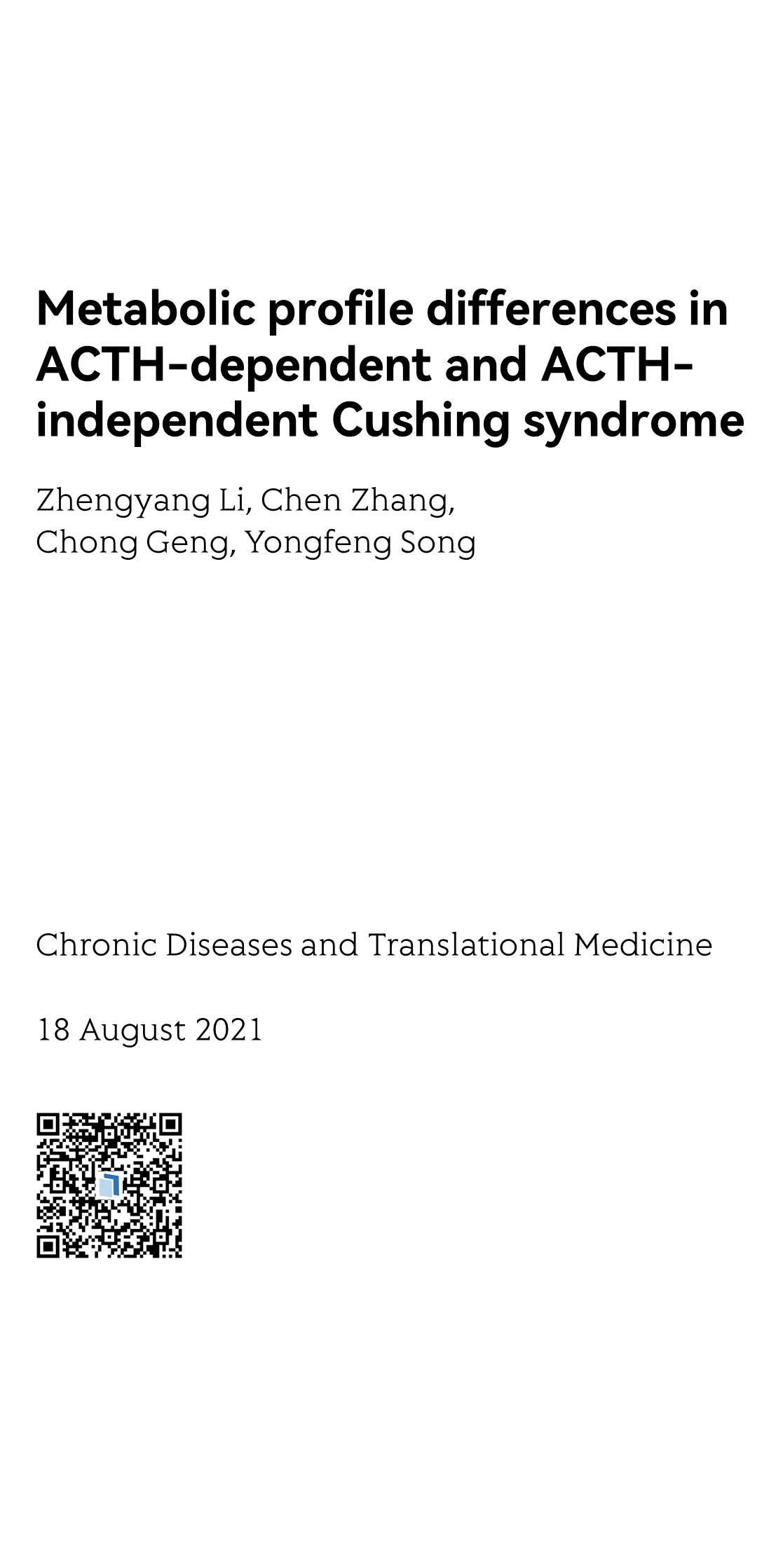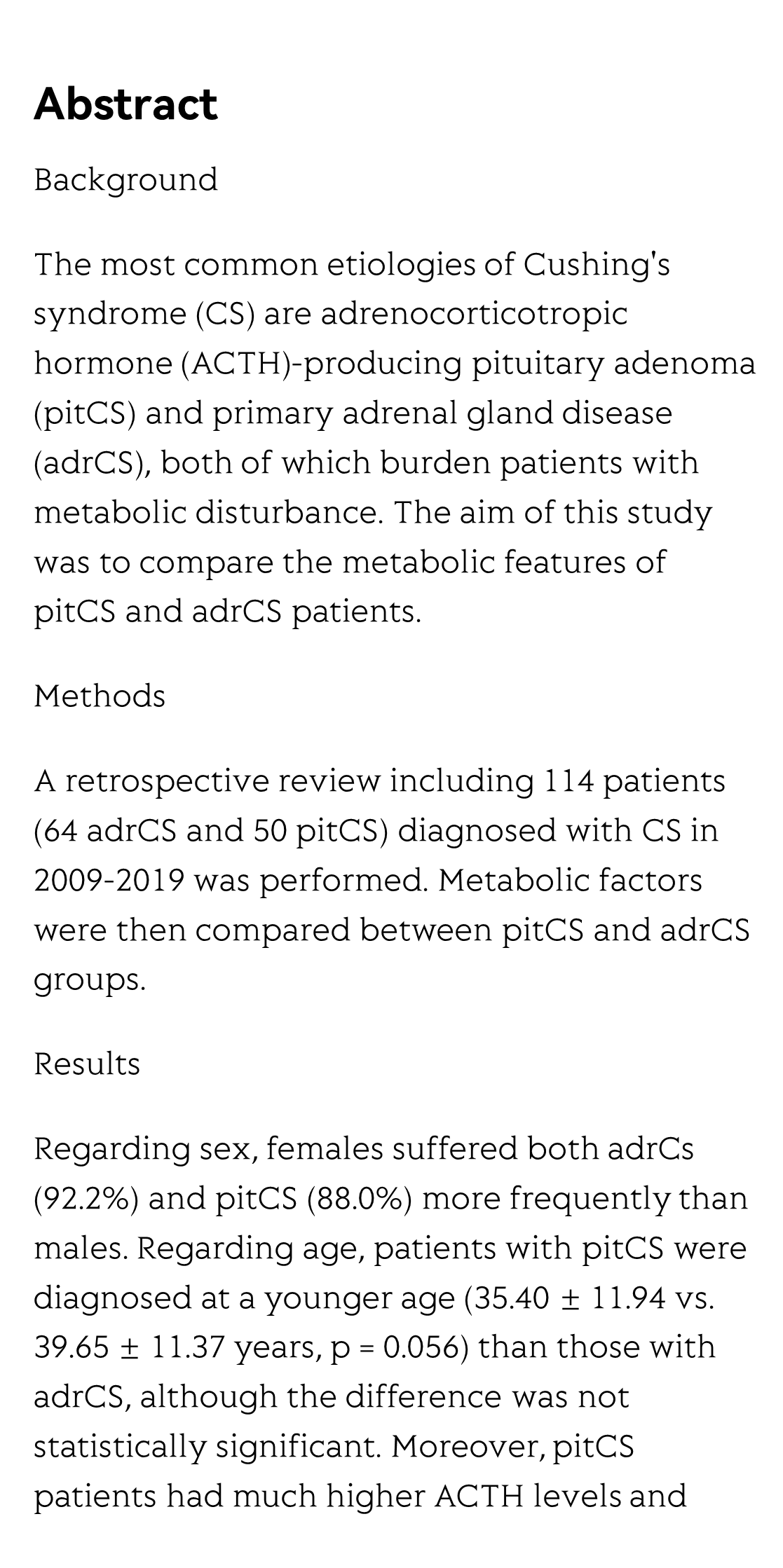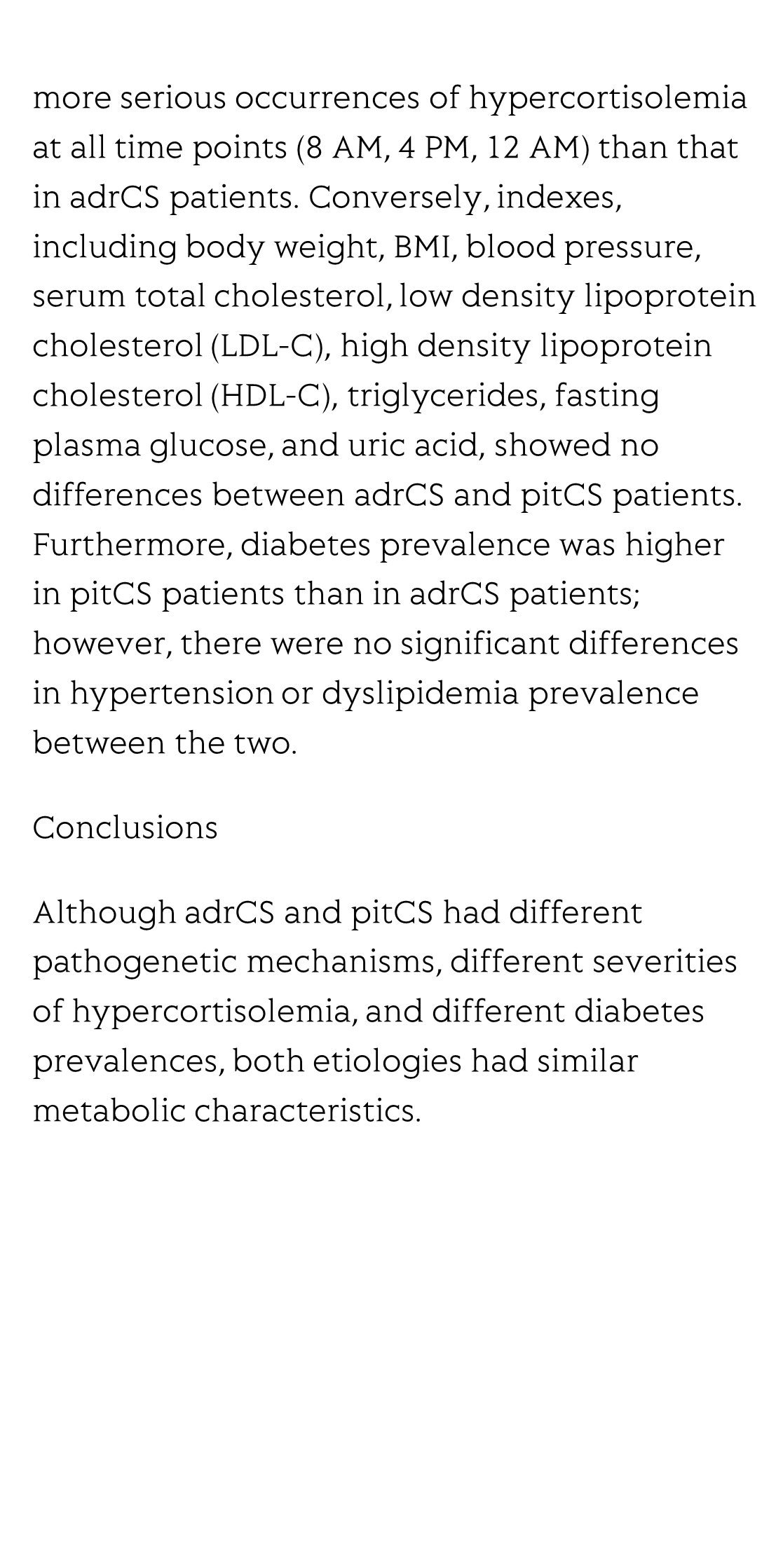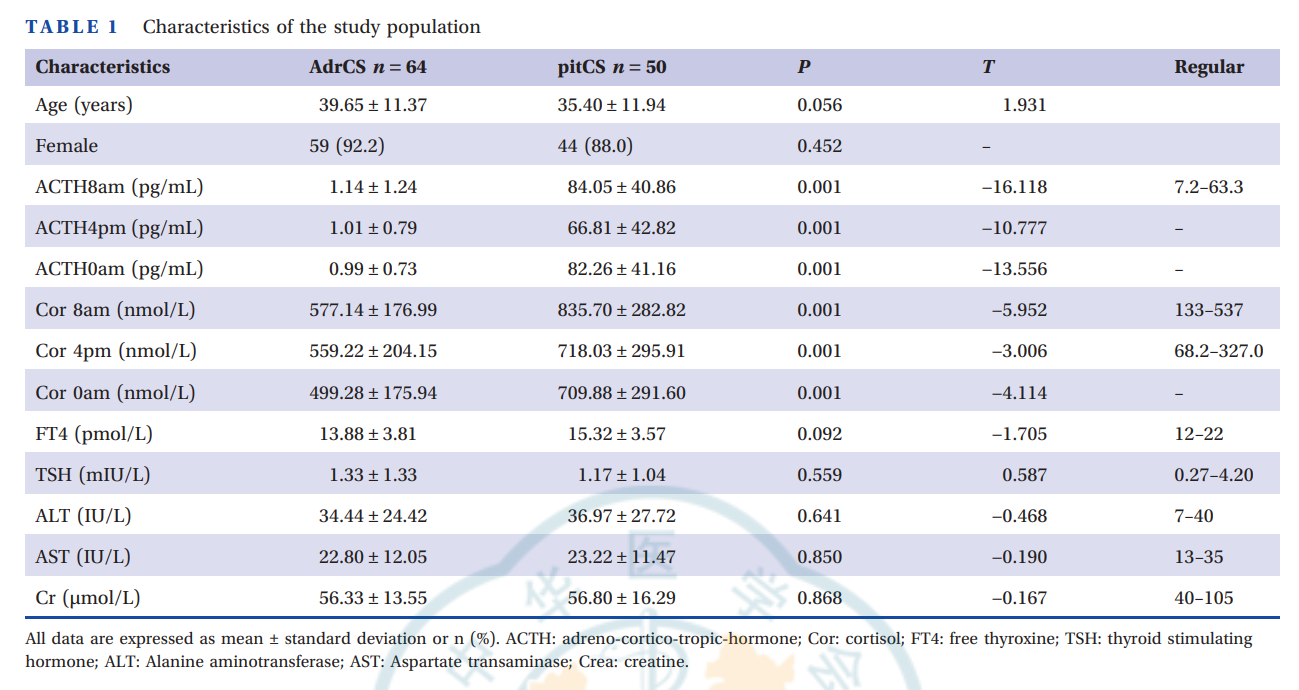(Peer-Reviewed) Metabolic profile differences in ACTH-dependent and ACTH-independent Cushing syndrome
Zhengyang Li ¹ ², Chen Zhang ¹ ², Chong Geng 耿冲 ³, Yongfeng Song 宋勇峰 ¹ ² ⁴
¹ Department of Endocrinology, Shandong Provincial Hospital Affiliated to Shandong First Medical University, Jinan, Shandong 250021, China
中国 山东 济南 山东第一医科大学附属省立医院内分泌科
² Institute of Endocrinology and metabolism, Shandong Academy of Clinical Medicine, Jinan, Shandong 250021, China
中国 山东 济南 山东省医学科学院 内分泌与代谢病研究所
³ Department of Breast and Thyroid Surgery,Shandong Provincial Hospital Affiliated to Shandong First Medical University, Jinan, Shandong 250021, China
中国 山东 济南 山东第一医科大学第一附属医院 乳腺甲状腺外科
⁴ Department of Endocrinology, Shandong Provincial Hospital Affiliated to Shandong University, Jinan, Shandong 250021, China
中国 山东 济南 山东大学附属省立医院 内分泌科
Abstract
Background
The most common etiologies of Cushing's syndrome (CS) are adrenocorticotropic hormone (ACTH)-producing pituitary adenoma (pitCS) and primary adrenal gland disease (adrCS), both of which burden patients with metabolic disturbance. The aim of this study was to compare the metabolic features of pitCS and adrCS patients.
Methods
A retrospective review including 114 patients (64 adrCS and 50 pitCS) diagnosed with CS in 2009-2019 was performed. Metabolic factors were then compared between pitCS and adrCS groups.
Results
Regarding sex, females suffered both adrCs (92.2%) and pitCS (88.0%) more frequently than males. Regarding age, patients with pitCS were diagnosed at a younger age (35.40 ± 11.94 vs. 39.65 ± 11.37 years, p = 0.056) than those with adrCS, although the difference was not statistically significant. Moreover, pitCS patients had much higher ACTH levels and more serious occurrences of hypercortisolemia at all time points (8 AM, 4 PM, 12 AM) than that in adrCS patients. Conversely, indexes, including body weight, BMI, blood pressure, serum total cholesterol, low density lipoprotein cholesterol (LDL-C), high density lipoprotein cholesterol (HDL-C), triglycerides, fasting plasma glucose, and uric acid, showed no differences between adrCS and pitCS patients. Furthermore, diabetes prevalence was higher in pitCS patients than in adrCS patients; however, there were no significant differences in hypertension or dyslipidemia prevalence between the two.
Conclusions
Although adrCS and pitCS had different pathogenetic mechanisms, different severities of hypercortisolemia, and different diabetes prevalences, both etiologies had similar metabolic characteristics.
Flicker minimization in power-saving displays enabled by measurement of difference in flexoelectric coefficients and displacement-current in positive dielectric anisotropy liquid crystals
Junho Jung, HaYoung Jung, GyuRi Choi, HanByeol Park, Sun-Mi Park, Ki-Sun Kwon, Heui-Seok Jin, Dong-Jin Lee, Hoon Jeong, JeongKi Park, Byeong Koo Kim, Seung Hee Lee, MinSu Kim
Opto-Electronic Advances
2025-09-25
Dual-frequency angular-multiplexed fringe projection profilometry with deep learning: breaking hardware limits for ultra-high-speed 3D imaging
Wenwu Chen, Yifan Liu, Shijie Feng, Wei Yin, Jiaming Qian, Yixuan Li, Hang Zhang, Maciej Trusiak, Malgorzata Kujawinska, Qian Chen, Chao Zuo
Opto-Electronic Advances
2025-09-25







